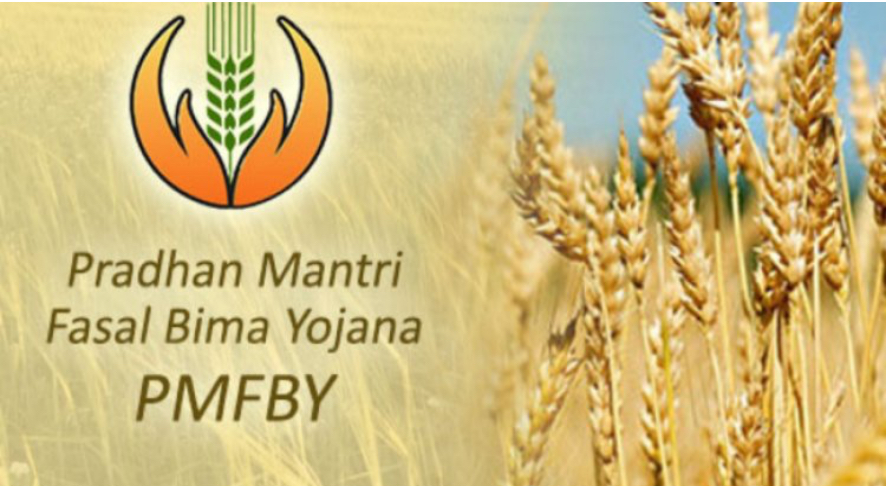Context: The Union Cabinet has sanctioned the extension of the Pradhan Mantri Fasal Bima Yojana and the Restructured Weather Based Crop Insurance Scheme until 2025-26.

About
• The Cabinet approved the establishment of the Fund for Innovation and Technology (FIAT) to support technological advancements in insurance schemes.
• Notable initiatives include the Yield Estimation System using Technology (YES-TECH), which employs remote sensing for crop yield estimation.
• Additionally, the Weather Information and Network Data System (WINDS) aims to enhance weather data collection through the use of automatic weather stations.
About Pradhan Mantri Fasal Bima Yojana
• Launch: Introduced in 2016 by the Ministry of Agriculture & Farmers Welfare.
• Objectives: This crop insurance scheme aims to provide financial assistance to farmers in the event of crop failure or damage due to natural disasters, pests, or diseases.
The key objectives include:
o Stabilizing farmers’ income to ensure their continued participation in farming.
o Encouraging the adoption of innovative and modern agricultural practices.
o Ensuring the availability of credit for the agriculture sector.
• Coverage: All farmers, including sharecroppers and tenant farmers cultivating the notified crops in designated areas, are eligible for coverage.
• Covered Crops: Food crops (Cereals, Millets & Pulses), Oilseeds, and Annual Commercial / Horticultural crops.
• Share between Centre and State: Since states play a significant role in implementing the scheme, the premium subsidy is shared equally between the Central and State Governments (50:50). For the North-Eastern States, the sharing ratio has been set at 90:10.
About Restructured Weather Based Crop Insurance Scheme (RWBCIS)
• Launched in 2016, the scheme aims to alleviate the financial hardship of insured farmers who may face crop losses due to adverse weather conditions.
• While PMFBY is based on yield, the RWBCIS uses weather parameters as a “proxy” to estimate crop yields and compensate farmers for presumed crop losses.
• All standard claims are processed and paid within 45 days after the end of the risk period.
Agri Credit in India
• Sources of Agricultural Credit: Public sector banks (such as the State Bank of India), regional rural banks (RRBs), cooperatives, and NABARD (National Bank for Agriculture and Rural Development) are the primary providers of formal agricultural credit.
Types of Agricultural Credit:
• Short-term Credit: Used to meet working capital requirements such as seeds, fertilizers, and pesticides.
• Medium and Long-term Credit: Used for purchasing equipment, irrigation systems, and land development.
Challenges:
• Limited credit access in rural areas.
• Reliance on informal credit sources that charge high interest rates.
• Challenges with loan recovery and defaults.
| Other Relevant Government SchemesKisan Credit Card (KCC) Scheme: Provides short-term credit to farmers for crop production and agricultural requirements, with flexible repayment terms. Pradhan Mantri Kisan Samman Nidhi (PM-KISAN): Offers direct income support of ₹6,000 per year to small and marginal farmers in three installments. Interest Subvention Scheme: Subsidizes interest rates on crop loans up to ₹3 lakh, easing the financial burden on farmers. Farmers’ Development Loans (FDL): Provides long-term loans for land development, irrigation, and the purchase of farm equipment. Rashtriya Krishi Vikas Yojana (RKVY): Provides funding to states for improving agricultural infrastructure and boosting productivity. National Mission on Agricultural Extension and Technology (NMAET):Supports agricultural productivity through extension services and technology adoption. Credit Guarantee Fund Scheme (CGS): Offers credit guarantees to micro and small enterprises, including agri-businesses. Rural Infrastructure Development Fund (RIDF): Provides loans for rural infrastructure projects such as irrigation and soil conservation. Kisan Rin Portal (KRP): A digital platform aimed at transforming access to credit services under the Kisan Credit Card Scheme (KCC) by offering a comprehensive view of farmer data, loan disbursement details, and promoting seamless integration with banks. |

